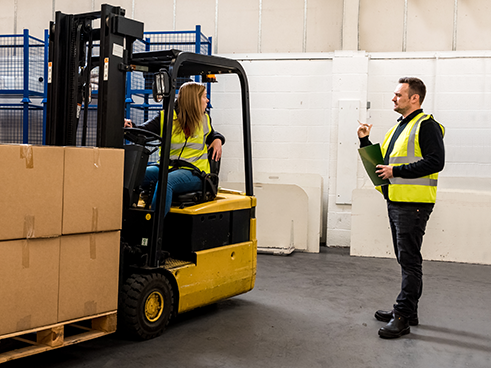 Stuart TaylorStuart Taylor is Managing Director of Mentor FLT Training Limited, the UK’s leading provider of training and associated services for all types of materials handling equipment and workplace transport.
Stuart TaylorStuart Taylor is Managing Director of Mentor FLT Training Limited, the UK’s leading provider of training and associated services for all types of materials handling equipment and workplace transport.
“This incident could so easily have been avoided by simply carrying out correct control measures and safe working practices.”
These are words we read all too often in the UK, quoting inspectors from the Health & Safety Executive (HSE) after an accident has occurred. But they could apply to almost every forklift accident in every country around the world.
Carrying out risk assessments and developing the findings into Safe Systems of Work (SSOW) should be standard practice. Together, they deliver a defined set of rules around each aspect of an operation and, in doing so, will minimise the risk of accidents.
Sounds simple, doesn’t it?
Sadly, however, not all companies have them, and even those that do don’t always ensure that they are effective and enforced.
Don’t leave things to chance
The fact is that SSOW have the potential to save lives. Without them and, crucially, the enforcement measures to deliver them, employees will operate at their own discretion.
Even though an operator may have received the required training, human nature means that complacency can soon creep in, leading to a host of bad habits. Left unchecked, they can have severe consequences.
A recent UK survey, perhaps indicative of the wider global picture, revealed some shocking insights into safety culture. Almost one third of those surveyed indicated that their forklift operators are either unaware of their company’s Safe Systems of Work, don’t understand them, or simply ignore them.
A further 10% said they didn’t have a Safe System of Work in place at all.
 Employers have a legal and moral duty of care to staff
Employers have a legal and moral duty of care to staff
Being proactive is key
Being proactive is key when it comes to forklift safety. The risk of accidents can be massively reduced if SSOW are established, clearly communicated and continually enforced.
Those SSOW should provide clear guidance for forklift operators on how they should work, and the importance of following safety measures, regardless of their own attitudes towards risk.
Take the use of seatbelts. There’s a common myth among forklift operators that unless a risk assessment directly specifies the use of a seatbelt, then it doesn’t need to be worn. But this is not the case and, in the UK, the HSE makes clear that where restraining systems are fitted, they should be used.
If seatbelts are not mentioned in a risk assessment, it does not mean that they are not required - seatbelts should be worn as standard practice. Instead, it is any exception to this rule which should be specified, with extremely strong justification, as part of a very thorough, realistic risk assessment.
Some forklift operators may prefer to not wear a seatbelt, but the importance of doing so – as part of an effective and enforced SSOW — hugely outweighs any inclination to give operators (or supervisors responsible for ensuring compliance) an easy life.
This is vividly demonstrated by what occurs in the event of a forklift tipping over.
Unless they are physically restrained (by a seatbelt), the operator’s natural instinct when a forklift starts to overturn is to try and jump clear. But this greatly increases the risk of serious crush injuries, as operators doing so are often caught between the cab’s framework and the floor — a process known as mousetrapping.
Setting the standard - and enforcing it
As an employer, you have a legal and moral duty of care to your staff and anyone else who could be affected by operations on your premises. Creating and continuously enforcing SSOW can be both tiring and tiresome, but doing it effectively should help you sleep at night.